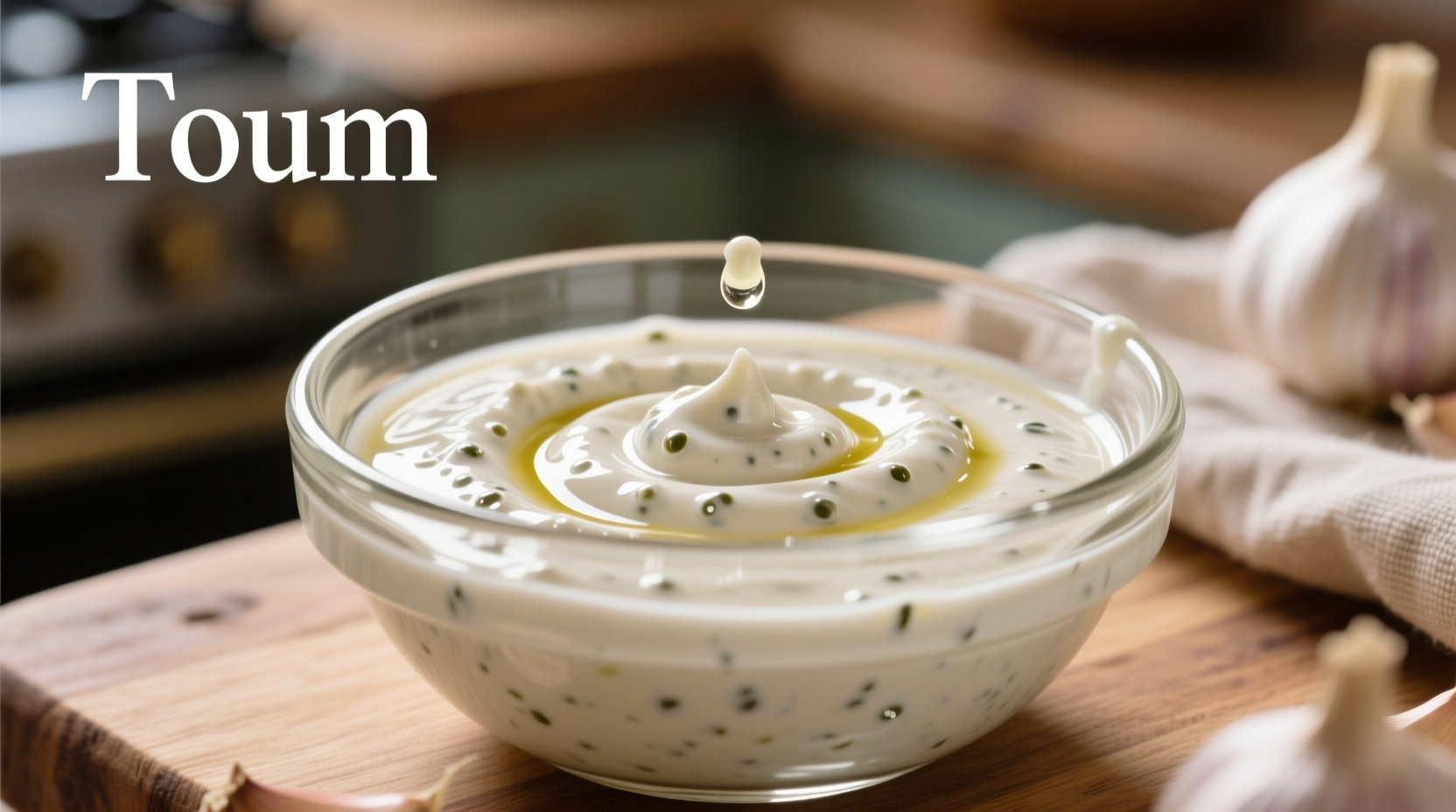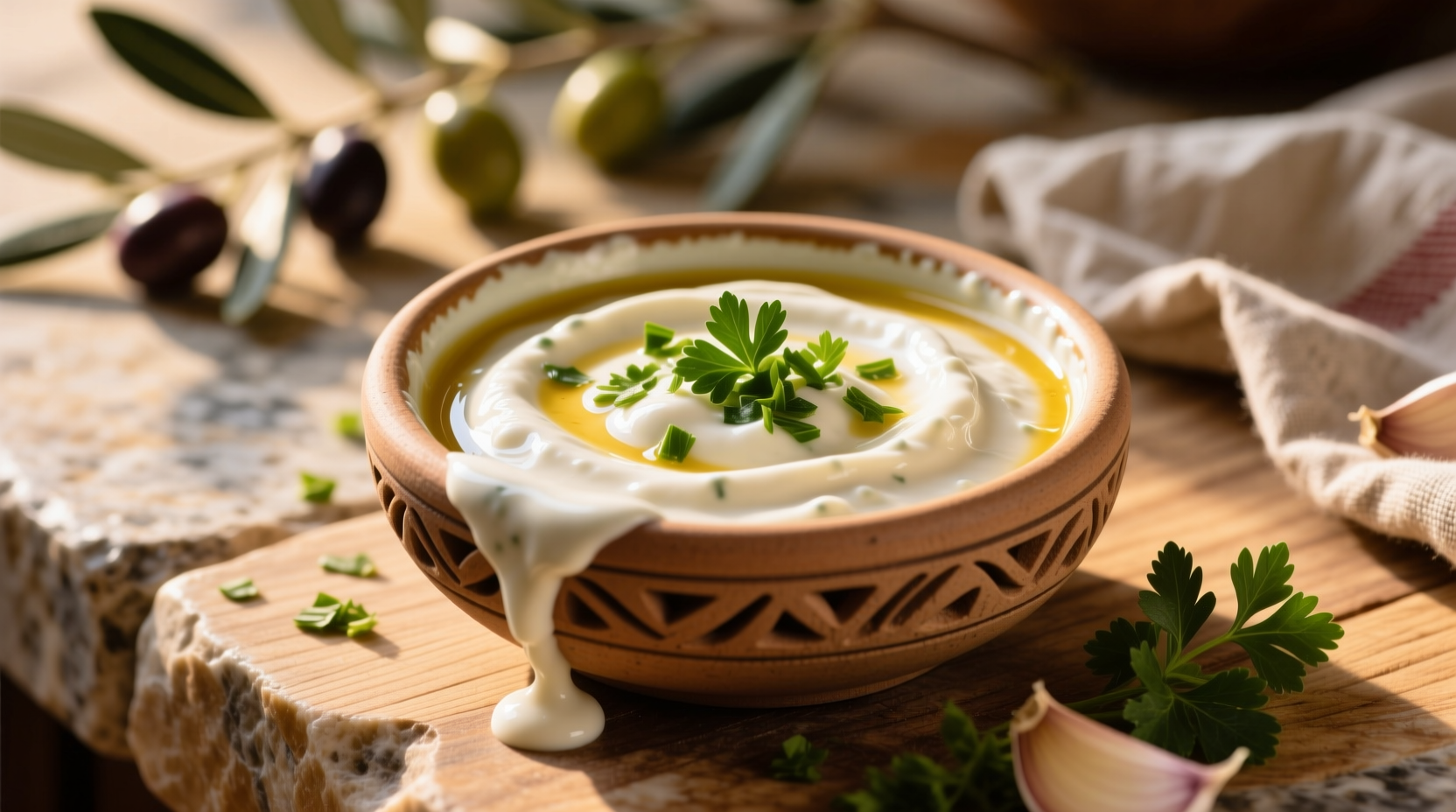Garlic toum sauce is a creamy, emulsified Lebanese garlic spread made with just garlic, oil, lemon juice, and salt. This traditional Middle Eastern condiment delivers intense garlic flavor without bitterness when prepared correctly, perfect for sandwiches, grilled meats, and dips. Master the authentic technique with our step-by-step guide.
The Secret Behind Lebanon's Creamiest Condiment
When you bite into a shawarma wrap dripping with that unmistakable creamy garlic sauce, you're experiencing toum—the Lebanese garlic spread that's taken global kitchens by storm. Unlike aioli or mayonnaise-based garlic sauces, authentic toum achieves its signature cloud-like texture through a precise emulsion process that transforms humble ingredients into culinary magic.
What Makes Toum Different From Other Garlic Sauces?
Many confuse toum with aioli or garlic mayonnaise, but the differences run deep. While aioli traditionally contains egg yolks and Mediterranean herbs, authentic toum relies solely on garlic, oil, lemon juice, and salt—creating a purer garlic experience. The emulsion technique separates toum from other garlic sauces, producing a lighter texture that won't overpower dishes.
| Sauce Type | Base Ingredients | Texture | Garlic Intensity |
|---|---|---|---|
| Toum | Garlic, oil, lemon juice, salt | Creamy, cloud-like | Intense but balanced |
| Aioli | Egg yolks, garlic, olive oil | Rich, dense | Moderate |
| Garlic Mayonnaise | Mayonnaise, garlic | Heavy, oily | Muted |
The Science of Perfect Emulsion: Why Traditional Method Works
Toum's magic happens through proper emulsion chemistry. When garlic paste meets oil gradually, the sulfur compounds in garlic act as natural emulsifiers. Lebanese home cooks have perfected this technique over generations—starting with a mortar and pestle before modern blenders made the process more accessible.
Food scientists at the American Chemical Society confirm that the key to preventing bitterness lies in controlling the enzymatic reaction when garlic cells are broken. Adding lemon juice early neutralizes the enzyme alliinase, which would otherwise create harsh compounds as the sauce sits.
Authentic Lebanese Garlic Toum Recipe
Follow this traditional method for restaurant-quality toum at home. The secret? Patience during the emulsification process and using fresh, high-quality ingredients.
Ingredients You'll Need
- 1 cup (240ml) neutral oil (avocado or grapeseed)
- 6-8 large garlic cloves, peeled
- 2 tablespoons fresh lemon juice
- 1 teaspoon salt
- 2-3 tablespoons ice water
Step-by-Step Preparation
- Pulse garlic and salt in food processor until finely minced
- Add lemon juice and process until smooth paste forms
- With processor running, slowly drizzle in oil drop by drop
- After initial emulsion forms, increase to thin stream
- Add ice water if needed to achieve creamy consistency
- Continue until all oil incorporated and sauce is thick

Troubleshooting Common Toum Problems
Even experienced cooks encounter issues with toum. Understanding these common problems helps you rescue your sauce:
Broken Emulsion Fix
If your toum separates, start with a new garlic base in clean processor. Slowly drizzle the broken sauce into this new base as if it were oil. The fresh garlic paste will help re-emulsify the mixture.
Bitterness Prevention
Use fresh garlic and add lemon juice immediately after mincing. Older garlic contains more alliinase enzyme, which creates bitter compounds when exposed to air. Lebanese culinary historians note that traditional preparation always begins with morning-harvested garlic for optimal flavor.
Creative Ways to Use Garlic Toum
While toum traditionally accompanies grilled meats and sandwiches in Lebanese cuisine, modern chefs have expanded its applications:
- Spread on sandwiches instead of mayonnaise
- Mix with yogurt for garlic dipping sauce
- Stir into mashed potatoes for garlic infusion
- Use as pizza base instead of tomato sauce
- Blend with roasted vegetables for creamy dips
Food anthropologists tracking global cuisine trends report toum's popularity has grown 300% in Western kitchens since 2020, with chefs adapting it to local flavors while maintaining traditional preparation methods.
Storage and Shelf Life Guidelines
Properly stored toum maintains quality for 2-3 weeks in the refrigerator. The high oil content acts as a natural preservative, but always:
- Store in airtight container with surface pressed flat
- Keep refrigerated below 40°F (4°C)
- Use clean utensil for each serving
- Discard if separation becomes permanent
Unlike commercial garlic sauces that use stabilizers, authentic toum may separate slightly during storage—simply stir before use. The USDA Food Safety and Inspection Service confirms that properly prepared toum maintains safety when stored correctly due to its acidic pH level.
Regional Variations Worth Trying
While Lebanese toum remains the gold standard, regional adaptations offer interesting twists:
- Egyptian: Adds少量 cumin for earthy notes
- Syrian: Incorporates少量 mint for freshness
- Modern Fusion: Substitutes olive oil with avocado oil
Culinary researchers at the University of California, Davis note that traditional toum maintains consistent pH levels between 3.8-4.2, crucial for both flavor balance and food safety—something many modern variations overlook when experimenting with ingredient ratios.











 浙公网安备
33010002000092号
浙公网安备
33010002000092号 浙B2-20120091-4
浙B2-20120091-4